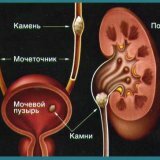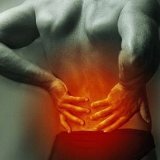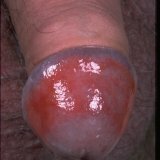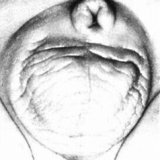Urolithiasis: symptoms and treatment

Urolithiasis is a disease of the urinary system, in which kidney stones are formed. Urolithiasis: symptoms and treatment of this disease can affect people of any gender and age. The stones can be of different sizes - from small( less than 3 mm) to very large( 15 cm in size and weighing several kilograms).They are usually formed in the kidneys, but can occur in the ureter and in the bladder.
Causes of urolithiasis.
The main cause of the formation of kidney stones is a metabolic disorder, namely the chemical and water-salt composition of the blood. In addition, a number of reasons can lead to urolithiasis:
- weighed down;
- gastrointestinal diseases( peptic ulcer, gastritis, colitis);
- diseases of the genitourinary system( prostatitis, cystitis, prostate adenoma, etc.);
- trauma and bone disease;
- vitamin deficiency;
- dehydration of the body;
- lack of ultraviolet rays and other reasons. Urolithiasis: symptoms of .
In some cases, the disease may begin to be asymptomatic. But that rarely happens. In the vast majority of cases, the disease begins acutely.
The main symptom of urolithiasis is low back pain. Characteristic changes in pain due to physical exertion and body changes. When moving the stone from the kidney to the ureter, pain in the groin, in the lower abdomen, and even in the leg may occur.
If the stone blocks the lumen of the ureter completely, an attack of renal colic occurs. The attack is expressed by acute pain in the lumbar region. When the stone passes into the bladder, the attack usually stops, and the blood can appear in the urine.
Other symptoms of the disease may be painful and frequent urination. Although the patient feels incomplete emptying of the bladder, the process of urination may be interrupted. This is a "padding syndrome".A change in the position of the body helps to continue the process of urination.Diagnosis of urolithiasis.
Modern research methods and modern equipment help to recognize the disease at the earliest stages. However, many patients are sure that they do not have kidney stones, and even with the appearance of pain they do not rush to see a doctor. The prognosis for late-onset treatment is not always favorable. Therefore, with the very first major symptoms, it is recommended that you consult your doctor as soon as possible.
After the treatment, it is important to follow preventive measures to avoid exacerbations of the disease, since urolithiasis has the property of recurrence.
For the diagnosis of urolithiasis the following examinations are carried out:- general blood test;
- biochemical blood test;
- general urinalysis;
- kidney ultrasound;
- excretory urography( radiography, before which a contrast agent is injected into the vein);
- radioisotope nephroscintigraphy( kidney scanning, before which a special drug is injected into the vein, which is then excreted through the kidneys).
Urolithiasis: treatment.
Treatment is carried out both conservative and operative.
Treatment of acute stages of the disease begins with the removal of an attack of acute pain. Then, the stone is removed, the treatment is carried out against infection and as prevention of relapse.
Conservative treatment includes treatment with drugs and the appointment of special therapeutic nutrition. Such treatment is applicable in cases where the size of the stones is small, up to 3 mm. At the moment, there are drugs that can dissolve kidney stones. However, they can be used only on the prescription of a doctor and under his supervision.
In surgical treatment, stones are removed from the body in an operative way during the operation. There is also a method of remote lithotripsy( crushing stones with a shock wave).The stone is hit by a wave with a duration of 0.3-0.8 microseconds. This procedure is very well tolerated by patients, but it is not always capable of breaking stones. This method also applies to surgical methods of treatment.
The choice of diet depends on the type and composition of the stones, as well as the causes of the disease. Some types of foods are prescribed in limited quantities or even excluded from the diet. The diet is chosen by the doctor.
Dietotherapy identifies two types of kidney stones: alkaline( phosphates and carbonates) and acid( urates and oxalates).
Phosphate stones are formed due to an alkaline reaction of urine. Diet should be aimed at its acidification. Therefore, designate a set of products promoting this: fish, meat, flour products and vegetable oil. Urine-leavening dairy products, vegetables and fruits are excluded from the diet. In addition, the drinking regime is somewhat restricted.
In the presence of carbonate stones in the urine, an alkaline reaction is observed. In this case, the use of such products as oatmeal, boiled meat and fish, butter and flour dishes is more preferable. Foods rich in calcium are excluded from the diet( milk and lactic-acid foods).
Uranium stones are found with a high content of salts of uric acid. Patients with urate stones often suffer from gout. In the presence of such stones, patients are prescribed medicines blemaren, uralit and others. With the appointment of a diet, the consumption of fish, meat and fats is limited, grapefruit juice is excluded. Lemon juice is shown to be used because of the high content of citrate in it.
Oxalate stones are made up of oxalic acid salts. This kind of stones occurs most often. Oxalate stones are formed when a small amount of calcium enters the body, therefore, when choosing a diet, preference is given to products rich in calcium: spinach, potatoes, salad, oranges and dairy products. In addition, patients are prescribed a dose of 2 g of magnesium carbonate every day. Magnesium is necessary for the binding of oxalic acid in the intestine.General recommendations.
- use more liquid;
- restrict the use of spicy, sour and fatty foods, monitor weight;
- take diuretic decoctions and infusions;
- adhere to a healthy lifestyle( exercise, avoid stress);
- in case of the first symptoms of the disease should always consult a doctor.
These same recommendations can be used as a prophylaxis of urolithiasis.



